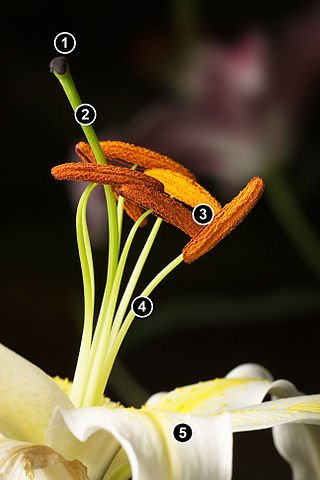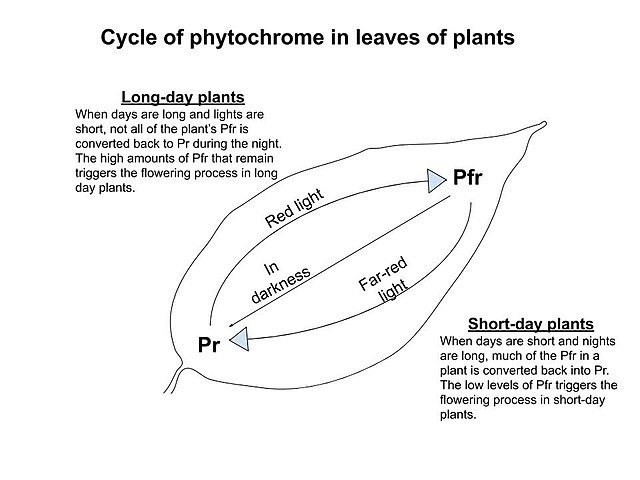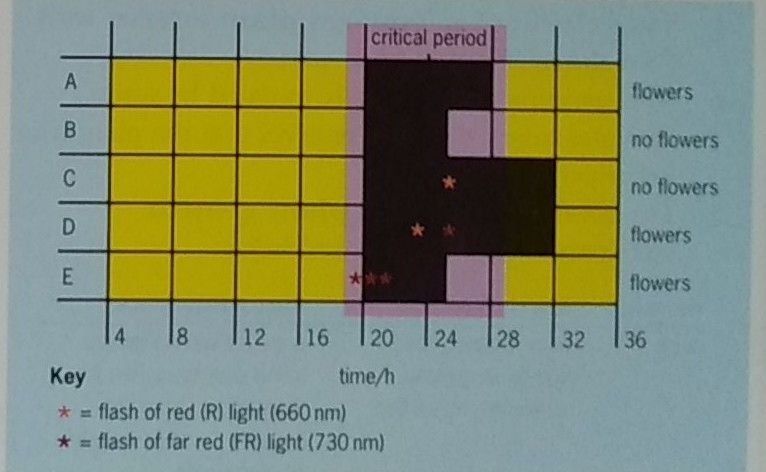HOW PLANTS GROW AND RESPOND (III)
Hello, great readers. Here goes the concluding part of my post on HOW PLANTS GROW AND RESPOND. In the previous post I discussed more on the life of plants; explaining what a seed is, its dormancy, germination, and finally on their movement and growth. And in the end of it, I had in mind that in my next post I would be discussing the control of flowering, phytochrome, ‘the plant pigment ’, how it works and finally on the search for florigen. So, that’s exactly what I will be writing on today. Why don’t you tag along with me on this?
THE CONTROL OF FLOWERING

It had long been a mystery how plants can control the timing of flowering. It’s not a matter of the plant reaching a certain stage of maturity – even plants of a different age will flower at the same time. Synchronised flowering is vital because it allows cross pollination. But how it is achieved?
Control over the timing of flowering has been the subject of much research as control over this process is obviously of great commercial interest. To understand flowering, it is necessary to study photoperiodism, the amount of darkness and daylight a plant responds to. It used to be thought that the length of day was vital, but it is now clear that the length of darkness that plant is exposed to plays a critical role.
There are basically three categories of plants based on their response to light:
- Short day plants, which need uninterrupted darkness of a certain threshold length before they will flower – think of them as ‘long night plants;
- Long day plants, which will only flower if the period of darkness is less than a certain critical length each day – they are ‘short night’ plants:
- Day neutral plants, which will flower whatever the photoperiod – they use some other internal or external signal to flower.
Examples of the three types of plant are given in the table below:
| Short day | Long day | Day neutral |
| Chrysanthemum | barley(winter) | antirrhinum |
| Strawberry | wheat(winter) | string bean |
| Rice | oat | cucumber |
| Coffee | rye grass | tomato |
| Tobacco | soya bean | spinach |
Spinach is a nutritious vegetable but it can’t flower in the tropics. This is because spinach is a long day plant and the days simply don’t get long enough. Spinach needs a day length of 14 hours in order to flower.
Tomatoes are day neutral plants. Most varieties will flower when they reach a certain stage of maturity – the 14th node, i.e. after the 13th leaf, the 14th one will be a flower that will ultimately bear fruit.
At the equator, day and night are roughly of equal length (12 hours) and this varies little throughout the year, but the further you go from the equator, the greater the seasonal variation in day length. This variation is reliable, as opposed to rainfall or temperature, and so is used by many organisms to synchronise their life cycle. In the UK, the length of day varies from about 17 hours on 21 June to about 8 hours on 21 December.

Phytochrome
The light-sensitive substance in plants is called phytochrome. Phytochrome simply means ‘plant pigment’. This blue-green compound, found in minute amounts on the tips of plants, consists of a light-absorbing pigment attached to a protein. Phytochrome exists in two interconvertible forms. One form absorbs light of 660 nm, i.e. red light, and is called PR (R for red) or P660: When it absorbs red light it is converted into PFR, or P730. PFR is converted back into PR by far red light.
Sunlight contains more red light than far red light, so most of the phytochrome is in the PFR form during the day. This is usually the more physiologically active form, PR being more stable and inert.
- In short day plants, PFR inhibits flowering. As the days shorten and the nights get longer, a threshold is reached when enough PFR is broken down to remove the inhibition.
- In long day plants, PFR stimulates flowering. As the days get longer and the nights shorter, the level of PFR will increase until it reaches the threshold needed to stimulate flowering.
Using the UK as a case study, most of the plants that flower in late summer or autumn are short day plants – they will flower when the night length exceeds a threshold value, e.g. 14 hours. In contrast, long day plants will not flower unless the day length exceeds a certain threshold. Such plants often flower in the spring as the days get longer.
Much research has been carried out on the cocklebur, a short day (long night) plant from North America. Flowering in short day plants is inhibited by PFR, and the longer the sunlight, the more PFR is broken down. The question is: just how long do the nights need to be? An investigation was carried out into the effect of night length, and of flashes of red and far red light. The results are shown in the figure below:

The figure above illustrates five experiments with photoperiodism in the cocklebur. In experiment A, plants have 8.5 hours of dark (the threshold) so they flower. In experiment B, plants have less than 8.5 hours - they don't flower. In experiment C, plants have a flash of red (660 nm) light after 8.5 hours which turns all their Pa back to PER - they don't flower.
In experiment D, plants get a flash of red light in the critical dark period, but then a flash of far red light restored all the phytochrome to P - so the plants flower.
Experiment E gave the plants intense exposure to far red light. This reduced the threshold by 2 hours because the PFR was broken down more rapidly. Many more experiments have been carried out in which different combinations of red and far red flashes were given. The simple overriding fact is that the last flash is critical, if it's far red, the plants flower. If it's red, they don't.
How does phytochrome work?
The story is beginning to unfold thanks to work done in Arabidopsis, the ‘lab rat’ of the plant world. Arabidopsis is a long day plant, so flowering is stimulated by PFR: It has been found that:
- In sunlight, PR is converted into PFR, the active form. PFR moves from the cytoplasm into the nucleus.
- PFR combines with a protein called PIF3 (phytochrome interacting factor 3).
- PIF3 is a transcription factor that switches on certain genes.
- These genes initiate flowering.
The flowering mechanism in short day plants, where PFR inhibits flowering, is less clear.
The search for florigen
Experiments in which different leaves were ‘blindfolded’ show that each individual leaf is capable of timing the night. However, while the reception is done by the leaves, the flowering response occurs elsewhere in the plant. There must be a signal that travels from leaf to the flower buds. Evidence suggests that this message is chemical in nature and it has been give the name florigen. However, nobody has succeeded in isolating this chemical. Whoever succeeds will be sure of a degree of fame and financial security, courtesy of the florists and plant growers the world over.
SUMMARY
In these series of post starting from 1, 2 and this last one, I made mention of the following:
- Seeds consist of an embryo plant together with food stored in a protective coat. Seed germination is usually initiated by water. Enzymes digest the food reserves that the plant uses for growth. The effects of the various plant growth substances are summarised below.
| Hormone | Site of production | Some notable effects |
| Auxin | Embryo, young leaves and growing points, particularly apical bud | promotes cell elongation; apical dominance – inhibits formation of lateral buds. |
| Gibberellins | embryo, young leaves and growing points | breaks seed dormancy, promotes germination and seed development by stimulating cell elongation. |
| Cytokinins | roots | promotes cell division |
| Abscisic acid | root cap, older leaves, stem | imposes seed dormancy and inhibits germination |
| Ethylene | ripening fruit, older tissues | promotes ripening of fruit. |
- Flowering and other plant responses are commonly controlled by day length. This is called photoperiodism. Usually, it is the length of night/darkness that is critical. The pigment phytochrome is responsible for the photoperiodic response. This exists in two interchangeable forms, PF and PFR. The latter is the more metabolically active.
- Plants fall into one of three categories according to their photoperiodic response: Short day plants need long nights; they won’t flower until PFR levels reach a threshold. These plants generally flower in the summer/autumn, as the nights get progressively longer. Long day plants need short nights. They won’t flower unless the period of darkness is less than a certain critical length each day. Day neutral plants use some other environmental or internal factor to trigger flowering.
Finally, there is evidence for a flowering hormone, florigen, but it has not been isolated despite much research.
Thanks.
REFERENCES
http://www.plantcell.org/content/14/suppl_1/S111
https://www.sciencedirect.com/science/article/pii/B9780123814661000250
http://www.plantphysiol.org/content/117/1/1
https://www.toppr.com/guides/biology/plant-growth-and-development/photoperiodism/
https://www.britannica.com/science/photoperiodism
https://en.wikipedia.org/wiki/Photoperiodism
https://en.wikipedia.org/wiki/Phytochrome
https://en.wikipedia.org/wiki/Xanthium
https://www.sciencedirect.com/topics/biochemistry-genetics-and-molecular-biology/phytochrome
https://www.mobot.org/jwcross/duckweed/phytochrome.htm
https://courses.lumenlearning.com/boundless-biology/chapter/plant-sensory-systems-and-responses/
https://www.sciencedirect.com/topics/medicine-and-dentistry/florigen
https://academic.oup.com/jxb/article/57/13/3395/475834
https://en.wikipedia.org/wiki/Florigen
Thanks for your contribution to the STEMsocial community. Feel free to join us on discord to get to know the rest of us!
Please consider supporting our funding proposal, approving our witness (@stem.witness) or delegating to the @steemstem account (for some ROI).
Thanks for using the STEMsocial app, which gives you stronger support. Including @steemstem as a beneficiary could yield even more support next time.